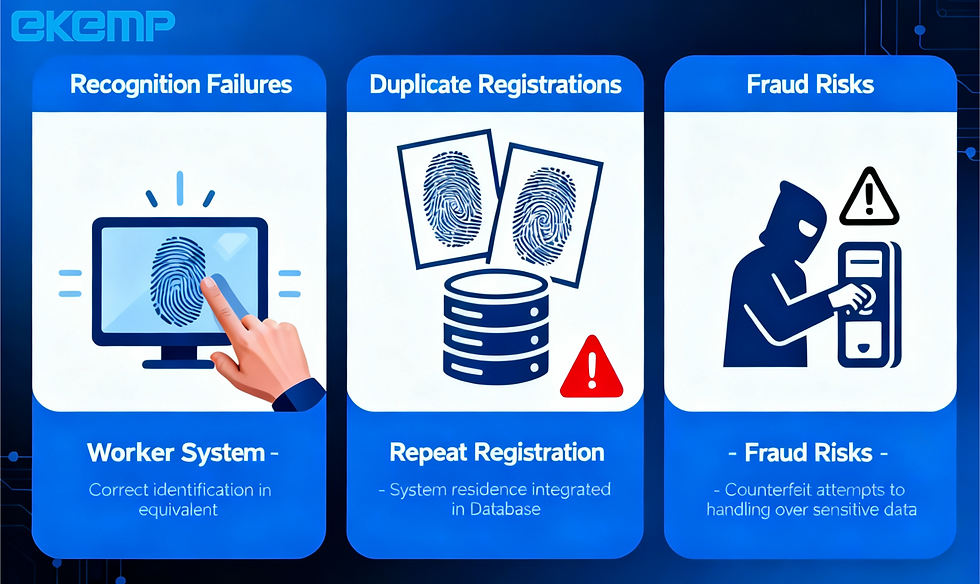Traditional Identification Method V.S Biometric Identification Technology
- Crystal Zhu
- Apr 27, 2021
- 2 min read
Updated: Sep 11, 2024
Traditional identification methods include identification items (such as keys, certificates, electronic cards, etc.) and identification numbers (such as user name and password). However, due to the main use of external objects, once the identification is stolen or forgotten, it is easy to be impersonated or replaced by others. So it is time to consider biometric identification methods.
Biometric identification technology mainly refers to the technology of identity authentication through human biometrics. Human biometrics mainly include fingerprint, face, iris, retina, palmprint and so on. Human biometrics usually have the characteristics of uniqueness, measurable or automatic identification and verification, heredity or life-long invariability, Therefore, biometric identification technology has more advantages than traditional authentication technology. With biological "key", you don't have to carry a bunch of keys, and you don't have to bother to remember or change the password. And system administrators do not have to forget the password and helpless. Biometric technology products are realized with the help of modern computer technology, it is easy to cooperate with the integration of computer and security, monitoring and management systems to achieve automatic management.

Compared with traditional identification, biometric identification technology has the following characteristics:
Portability: biological characteristics are inherent characteristics of the human body, and the human body is the only binding, with portability.
Security: human characteristics are the best proof of personal identity to meet higher security needs.
Uniqueness: everyone has different biological characteristics.
Stability: biological characteristics such as fingerprint, iris and other human features will not change with time and other conditions.
Universality: everyone has this characteristic.
Convenience: biometric identification technology does not need to memorize passwords and carry special tools (such as keys), so it will not be lost.
Collectability: the selected biometrics are easy to measure.
Acceptability: users are willing to accept the selected personal biometrics and their applications.
Based on the above characteristics, biometric identification technology has incomparable advantages over traditional identification methods. With biometric technology, it is no longer necessary to memorize and set passwords. It can be used to encrypt important files, data and transactions. It can effectively prevent malicious embezzlement and is more convenient to use.
Now, you know all of these pros of biometric identification technology. How about learning EKEMP biometric products right now? We have plenty of biometric enrollment kits, biometric tablets and biometric terminals with high standards for your needs. You are welcome to explore your journey right now!






